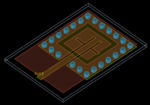Nano_o
Member level 2

dear all,
I want to know which method is more adequate to analyse the characteristics of a SIW antenna and what are its advantages compared with the rest of the methods?
many thanks!
I want to know which method is more adequate to analyse the characteristics of a SIW antenna and what are its advantages compared with the rest of the methods?
many thanks!





